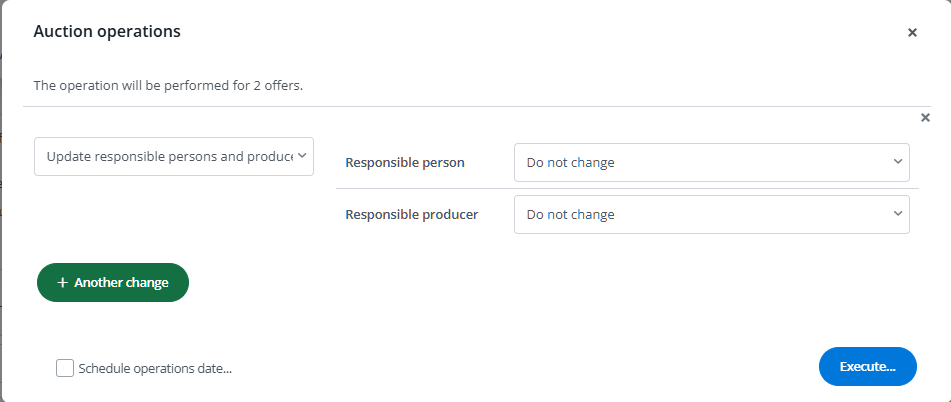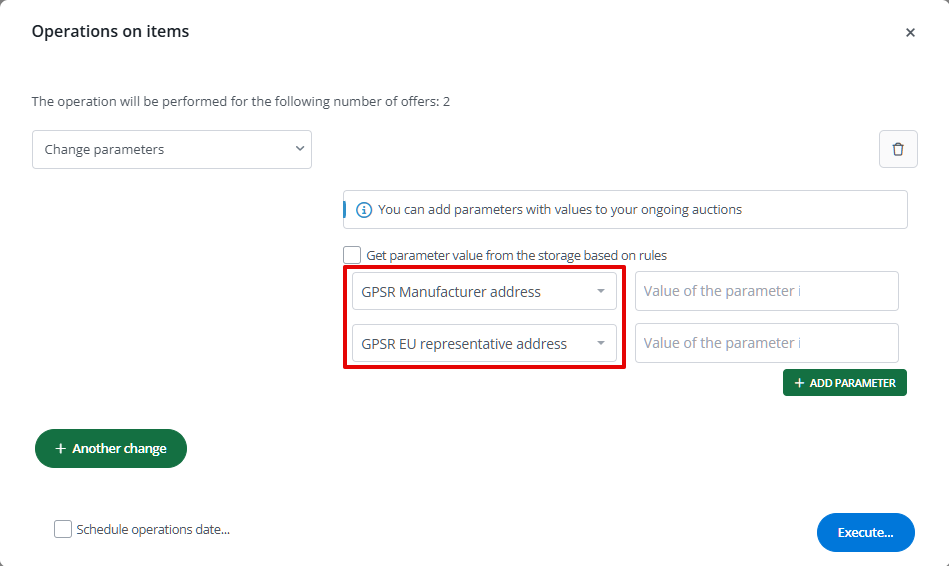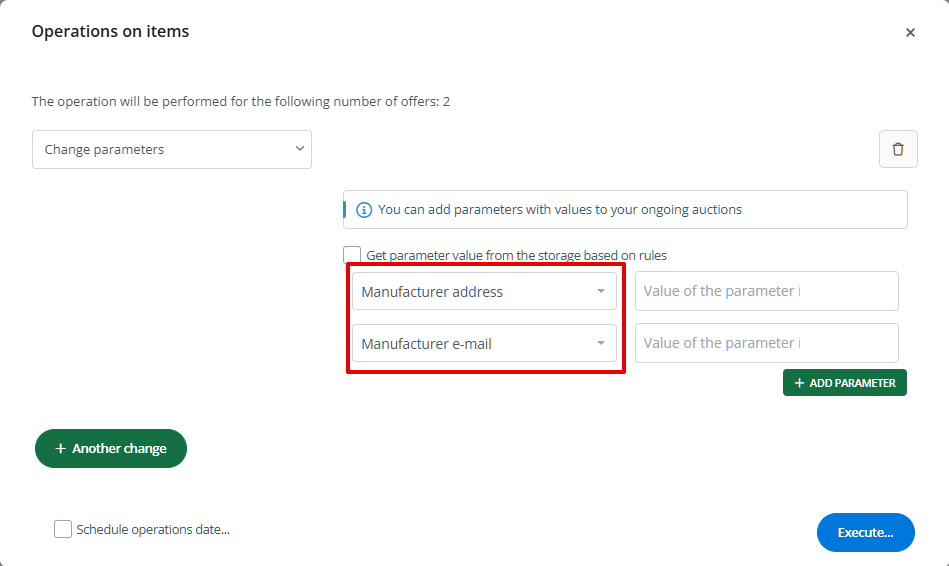
On December 13, 2024, a new EU regulation will come into force, significantly impacting online retailers across the European Union. The General Product Safety Regulation (GPSR) introduces several important changes regarding product safety and information obligations. Let’s take a look at what GPSR means for the e-commerce industry and how to prepare for it.
What is GPSR, and what are its main objectives?
The General Product Safety Regulation (GPSR) aims to ensure that every product (new, used, repaired, or refurbished) sold on the EU market is safe for consumers. It covers extensive requirements for product design, labeling, and monitoring, emphasizing transparency in the supply chain. This ensures that anyone can easily identify the product’s source, significantly enhancing consumer safety.
Why is GPSR important for e-commerce?
For e-commerce, GPSR means greater accountability for products introduced to the market, especially those imported from outside the EU. Online sales allow consumers to purchase products from manufacturers worldwide, which poses challenges for online retailers in monitoring product compliance with the requirements of the target market. With GPSR, customers will have access to more comprehensive product information and guarantees of prompt responses from sellers regarding potential safety issues.
Important! GPSR applies only to consumer products (B2C). B2B transactions are exempt from these regulations.
Key GPSR Requirements for E-Commerce Sellers
GPSR imposes various obligations on operators in the supply chain, including:
- Manufacturers:
- Must design, test, and label products according to GPSR requirements.
- Must maintain technical documentation and records of customer reports.
- Importers:
- Responsible for ensuring products meet safety standards and are properly labeled.
- Required to store copies of technical documentation for 10 years.
- Distributors:
- Must verify that products comply with labeling requirements and include necessary instructions and safety information.
Responsibilities of Manufacturers and Importers
Manufacturers must
- Ensure product safety: Conduct risk analysis and prepare technical documentation demonstrating compliance, to be kept for 10 years after the product is introduced to the market.
- Label products: Include identification markings (e.g. type, batch, or serial number) and manufacturer details (name, address, email).
- Provide instructions and safety information: These must be available in the language of the country where the product is sold.
- Maintain a complaints register: Analyze all consumer reports and document corrective actions.
Importers must
- Verify product compliance: Check that the manufacturer has provided technical documentation and that the product meets safety standards.
- Label the product with their details: If the manufacturer’s information is missing or incomplete, the importer must add their details.
- Store documentation: Like manufacturers, importers must keep technical documentation for 10 years after the product is placed on the market.
Online Retailer Obligations
- Verify that the product is labeled correctly (including the manufacturer’s or trademark name) and that all necessary manufacturer and importer details (postal and electronic addresses) are included.
- Ensure that accompanying instructions and safety information are in the language of the country where the product is sold.
- Collaborate with supervisory authorities by providing detailed supply chain information, including details about product suppliers, components, software, and entities to whom the products were sold. This data must be stored for 6 years after product delivery.
Which products are exempt from GPSR?
Certain products are excluded from the new regulation.

Additionally:
- Genetically modified organisms and microorganisms.
- By-products of animal origin.
- Plant and animal products related to reproduction.
- Certain types of aircraft.
- Equipment used by service providers to transport consumers.
- Products requiring repair, refurbishment, or recycling before use, clearly marked as such.
For more details, refer to Article 2 of the GPSR.
How to Prepare for GPSR?
- Product Audit: Verify that your products meet safety requirements, including labeling, instructions, technical documentation, and manufacturer/importer identification.
- Update Product Information Online: Ensure that required manufacturer identification and safety information are visible on product pages. Make sure your products comply with GPSR requirements.
- Supplier Collaboration: Ensure that every supplier meets GPSR requirements, particularly if the product is imported from outside the EU. Updating supplier agreements may also be necessary to ensure full compliance.
- Staff Training: Train staff involved in sales and customer service on the new regulations to ensure compliance at every stage of the sales process.
Penalties for Non-Compliance with GPSR
GPSR introduces strict penalties for violations. In Poland, high financial penalties are planned to motivate companies to implement the new requirements:
- Up to PLN 1 million for manufacturers and importers for non-compliant products.
- Up to PLN 500,000 for distributors for documentation and labeling violations.
- Up to PLN 500,000 for online sellers for violations of informational obligations.
It is worth noting that these sanctions can vary from country to country, requiring particular care when introducing products into different markets.
Support from Base.com
We are actively implementing changes to help sellers adapt to the requirements of the GPSR. New features will simplify managing the data required by the directive, including information on manufacturer responsibility and product safety. Some marketplace platforms are still preparing appropriate tools to meet these obligations. We are monitoring these changes to adapt our integrations and support you in selling in compliance with the requirements.
Changes Implemented on Individual Marketplaces
Allegro
New Tabs in Allegro Panel
Responsible Person and Responsible Producer: Enables input of data required by the directive.

Data Import
- Update Button: Allows quick import of data about the Responsible Person and Responsible Producer from Allegro to Base
- Add Button: Redirects users to the Allegro site to manually define this information for their account.
Listing Form
In the Data tab, you can manually assign the appropriate values to the fields for the Responsible Person and Responsible Producer, ensuring compliance with new regulations on Allegro.

Automatic Settings
In integration settings, you can define default values for these fields, enabling automatic assignment during offer listing.

Updating Existing Offers
To simplify data updates, we have introduced a new feature that allows for quick editing of the responsible person and producer in an offer on Allegro. This enables you to easily update your offers, ensuring they align with the latest requirements.

Creating Mapping Rules
A new operation will automates the process of assigning data to offers, significantly speeding up the handling of a larger number of products.

Amazon
New Fields in the Offer Listing Form
Fields adapted to GPSR requirements allow entering all necessary data for new offers, such as information about the producer and responsible entities.

Updating Existing Offers
An upcoming feature will allow quick editing of parameters in offers on Amazon, helping you keep your listings compliant with new requirements.
 AliExpress
AliExpress
Producer Parameters
The offer listing form includes fields related to the producer, visible only in selected categories and must be defined directly on AliExpress.

Data Import
Since these parameters are user-specific, after adding them on AliExpress, you must download the data to Base using the Download button in integration settings (Listing Settings tab). Once imported, these values can be assigned to products during offer listing.

Product Label
To comply with GPSR, a product label must be uploaded. In Base, you can select the source of this label:
- Go to Listing Settings.
- Find the field Qualification Information image.
- Choose one of two options:
1. The image number from the product inventory.
2. An additional field from which the system will retrieve the label link.
Note: The image must be in JPG format, as this is the only format accepted by AliExpress.

Kaufland
New Parameters
The offer listing form includes fields such as the CE Certificate, which can be provided as a link to an image (JPG, PNG, PDF formats).

Quick Parameter Editing
A new operation allows fast updating of GPSR-related data in offers on Kaufland, making it easier to comply with GPSR requirements.

eBay
Planned Improvements
- Offer Listing Form Updates: New fields required for GPSR compliance will be introduced, enabling sellers to fill out safety and producer information for new listings.
- Editing Existing Offers: Will allow easy updates to data in active offers to comply with the regulation.
eMAG
Offer Listing Form
Parameters related to the GPSR are already available to be filled out.

Planned Improvements
Editing Any Parameter: To simplify data updates, a new operation will allow quick editing of any parameter in an offer on eMAG. This will enable Base users to update their listings easily and comply with new requirements.
Fruugo
Offer Listing Form
Parameters related to the GPSR are already available to be filled out.

Ceneo
Offer Listing Form
Parameters related to the GPSR are already available to be filled out.

Important! Ceneo is a feed-based integration. To update existing listings, the product must be relisted. This will update all product-related information in the XML file, replacing the “old” product with the “new” one.
ManoMano
ManoMano has not introduced any changes regarding the GPSR regulation. The listing form already includes parameters such as SKU, EAN, SKU_MANUFACTURER, BRAND, and MANUFACTURER, which ManoMano considers compliant with the required data.
Additionally, warnings and safety information about products, which must be included in the product feed, are mandatory for selected categories. Examples include parameters like Energy Efficiency Attributes, Power, Voltage, etc. These parameters are submitted in PDF format.
InpostFresh
Listing Form
The listing form for InpostFresh includes GPSR-related parameters that need to be completed.

Quick Parameter Editing
A new feature allows for quick updates of GPSR-related data in listings on InpostFresh, making it easier to comply with GPSR requirements.

FashionDays
Listing Form
A new feature allows for quick updates of any data in listings on FashionDays, making it easier to comply with GPSR requirements.

Quick Parameter Editing
A new feature allows for quick updates of GPSR-related data in listings on FashionDays, making it easier to comply with GPSR requirements.

Etsy
Etsy has not introduced any changes regarding the GPSR regulation. The listing form includes the “Production Partner” parameter, allowing the input of manufacturer data. However, manufacturers are defined directly on Etsy’s platform.

Additionally, Etsy does not allow updates to this parameter via API. A customer mailing has been sent regarding the manual update of these details on the marketplace. For any questions, please contact Etsy support.
Otto
Listing Form
The listing form for Otto includes GPSR-related parameters that need to be completed.

Quick Parameter Editing
A new feature allows for quick updates of GPSR-related data in listings on Otto, making it easier to comply with GPSR requirements.

Decathlon
Listing Form
The listing form for Decathlon includes GPSR-related parameters that need to be completed.

Quick Parameter Editing
In the Decathlon integration, no operations are introduced to update these parameters directly. To update listings, the product must be relisted with updated data.
How to do this?
- To update, eg. only the handling-time parameter already included in a listing (linked to the offer), simply complete the listing form again (without selecting a category) and submit it.
- To update product-related parameters (either new or visible after selecting a category), first choose a category (all required fields for the category will be displayed), complete the mandatory information (including GPSR details), and then submit the form.
Ongoing Work
Base continues to adapt integrations for additional marketplaces, including:
- Zalando, Heureka, Erli, Joom, Aukro, Skroutz, Velomarket, Fyndiq, Altex, Skroutz, OLX.
Features similar to those described above will be implemented for these platforms, ensuring GPSR compliance for international sales.
Follow our blog for the latest updates on the system.
The article is for informational purposes only and does not constitute legal advice. No content in this communication should be interpreted as creating a client-advisor relationship. You should not take action or rely on the information provided without seeking the advice of qualified legal specialists regarding your specific situation.

